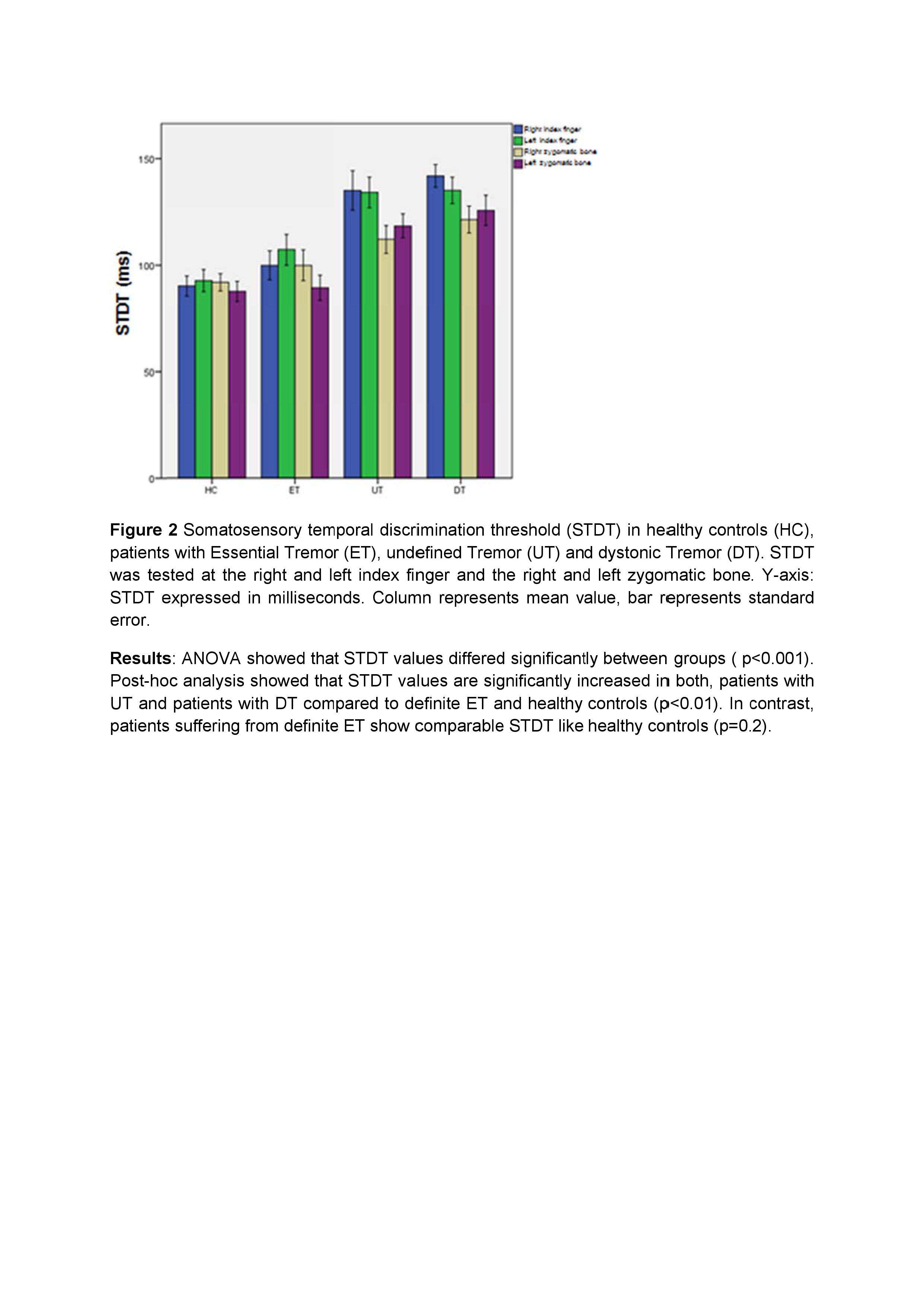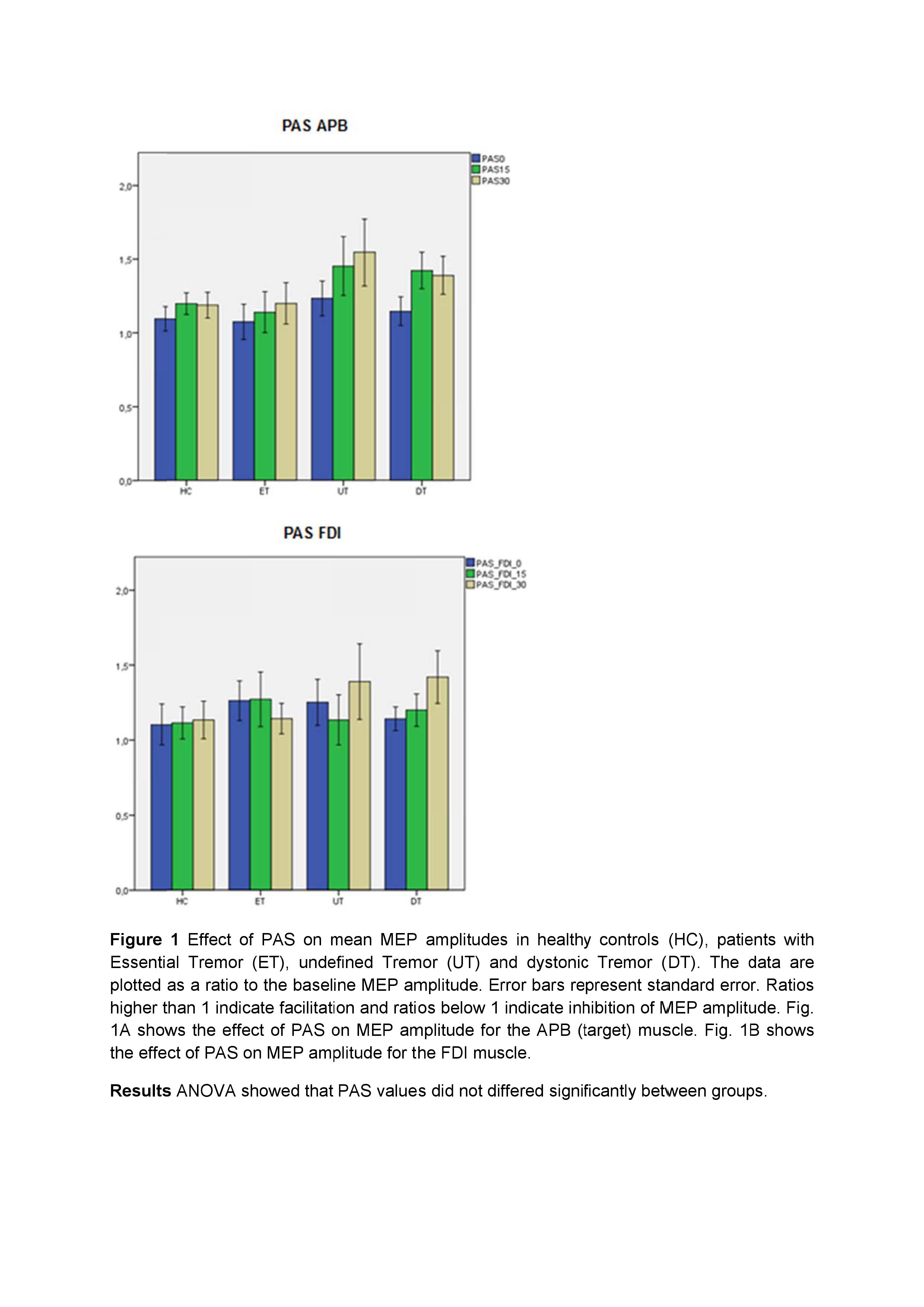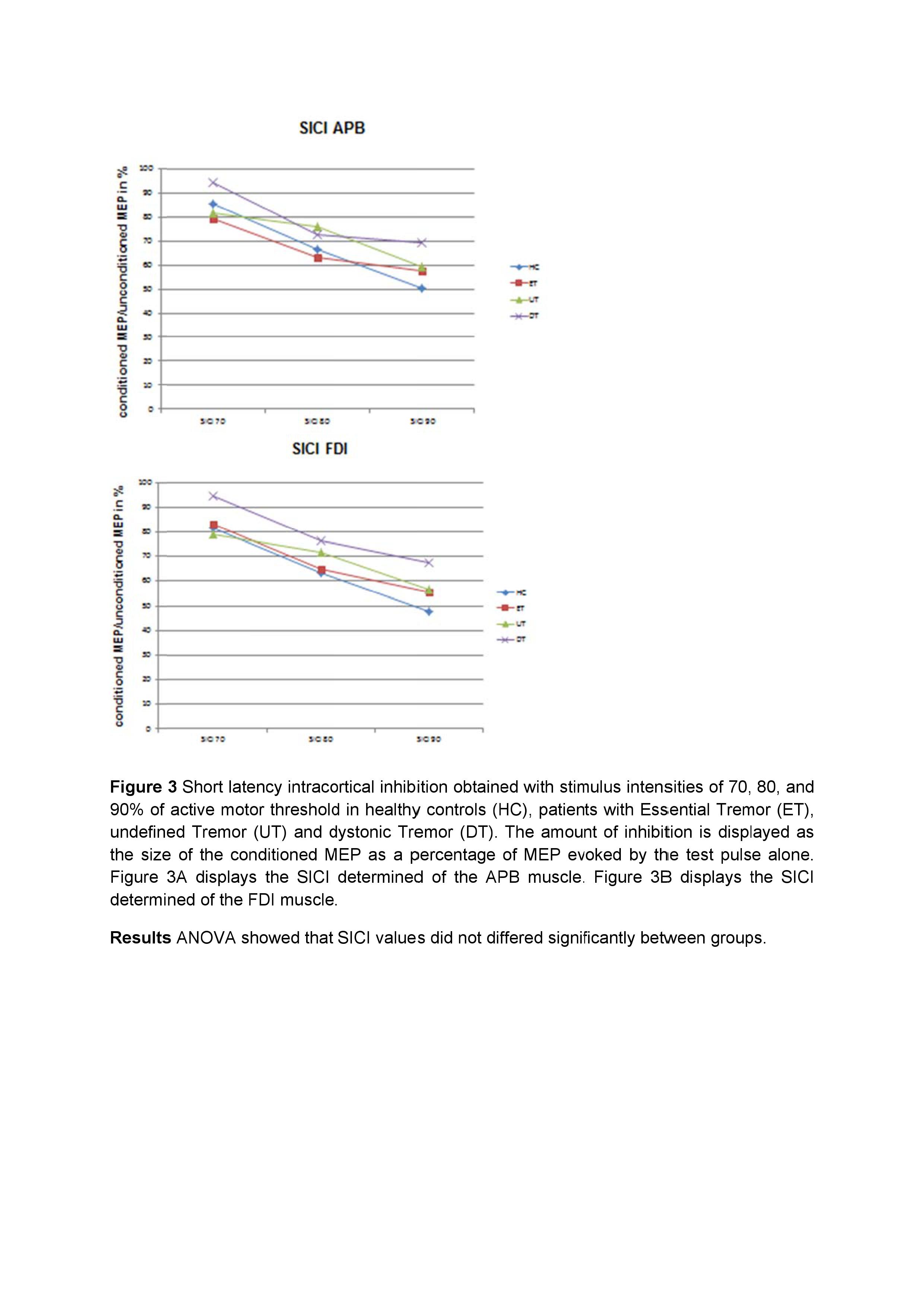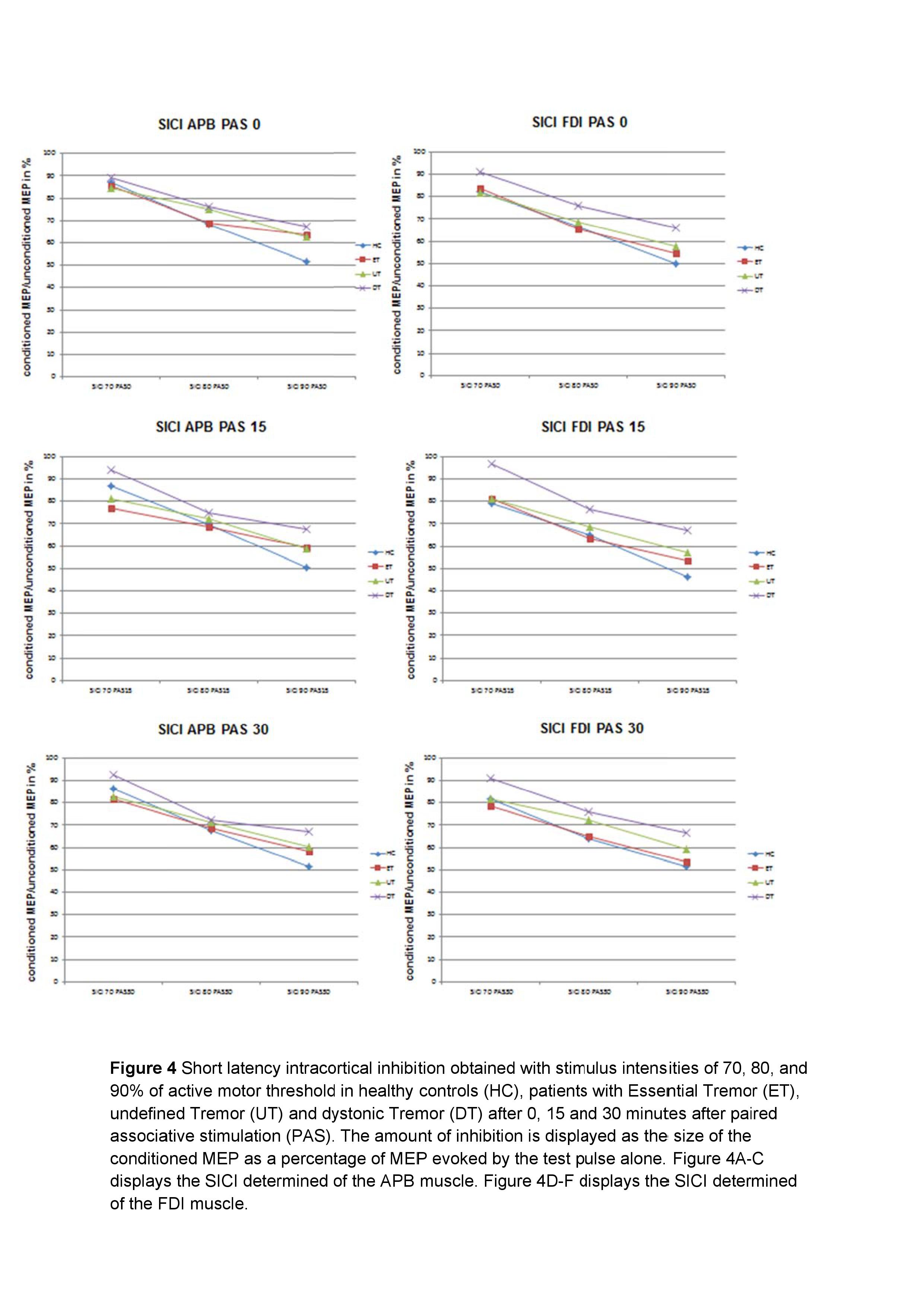Session Information
Date: Sunday, October 7, 2018
Session Title: Tremor
Session Time: 1:45pm-3:15pm
Location: Hall 3FG
Objective: The aim of this study was to investigate the somatosensory discrimination threshold (STDT), the short intracortical inhibition (SICI) and the cortical plasticity via paired associative stimulation (PAS) in patients with an isolated asymmetric limb tremor and compare the results with patients suffering from definite ET, dystonic tremor and healthy controls.
Background: There is increasing evidence that the term Essential Tremor (ET) encompass a spectrum of different tremor forms rather representing a clinical entity. In particular the clinical differentiation of ET and dystonic tremor can be challenging. The characterization of patients suffering from an isolated asymmetrical and irregular limb tremor without overt dystonia (indeterminate tremor) is an unsolved problem because they rather fulfill the criteria for ET nor dystonic tremor.
Methods: We performed STDT, SICI and PAS in a total number of 64 patients suffering from either definite ET (n=23), dystonic tremor (n=26) or indeterminate tremor (N=15). Results were compared with 29 age matched healthy controls. Clinical diagnosis of ET and dystonic tremor was performed according to the new MDS consensus statement for tremor (1). Indeterminate tremor was defined as an isolated asymmetric (≥1 point difference on TETRAS scale) and jerky limb tremor without further neurological abnormalities and a tremor duration of at least 3 years. Patients were separately rated by 5 different raters with an expertise in movement disorders.
Results: STDT was significantly increased in both patients with dystonic tremor and isolated asymmetric limb tremor while it was normal in patients with essential tremor and healthy controls. Both SICI and PAS did not determine any significant difference between the investigated subgroups.
Conclusions: We found that so-called indeterminate tremors share electrophysiological similarities with dystonic tremor instead of essential tremor and may therefore share a similar pathophysiology. This assumption is in line with recent findings that demonstrate that tremor might be the main clinical presentation of dystonia and that dystonic tremor might even occur in the absence of overt clinical dystonia (2).
References: 1 Bhatia KP, Bain P, Bajaj N, et al. Consensus Statement on the classification of tremors. from the task force on tremor of the International Parkinson and Movement Disorder Society. Movement disorders : official journal of the Movement Disorder Society 2018;33:75-87. 2 Stamelou M, Charlesworth G, Cordivari C, et al. The phenotypic spectrum of DYT24 due to ANO3 mutations. Movement disorders : official journal of the Movement Disorder Society 2014;29:928-34.
To cite this abstract in AMA style:
F. Gövert, J. Becktepe, F. Brugger, L. Rocchi, A. Garrido, B. Balint, R. Hannah, T. Walter, J. Rothwell, R. Elble, K. Bhatia, G. Deuschl. Distinguishing isolated asymmetric limb tremor from essential tremor: An electrophysiological study [abstract]. Mov Disord. 2018; 33 (suppl 2). https://www.mdsabstracts.org/abstract/distinguishing-isolated-asymmetric-limb-tremor-from-essential-tremor-an-electrophysiological-study/. Accessed December 25, 2025.« Back to 2018 International Congress
MDS Abstracts - https://www.mdsabstracts.org/abstract/distinguishing-isolated-asymmetric-limb-tremor-from-essential-tremor-an-electrophysiological-study/





